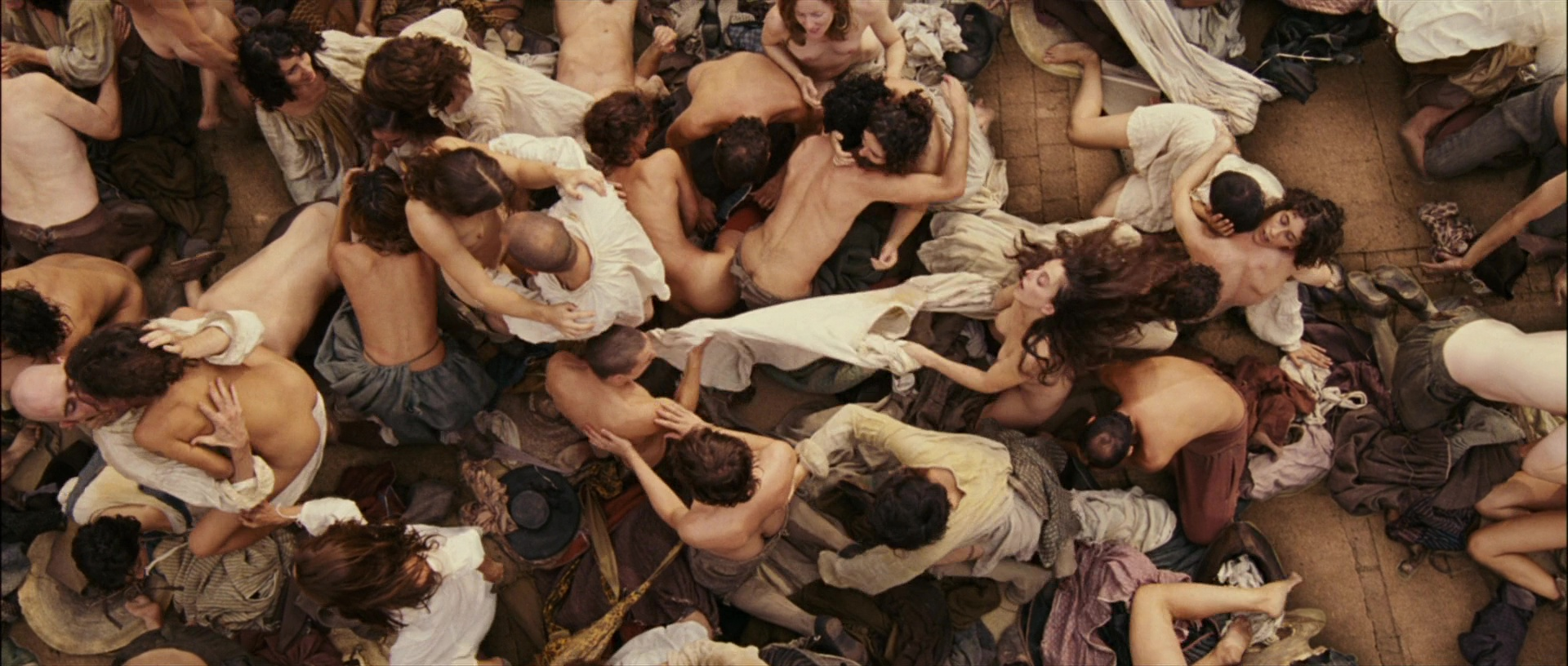A film about obscenely rich Westerners overindulging themselves courtesy of Manson-esque murder expeditions isn’t an obvious candidate for laugh riot of the year. But, amidst its nightmarish exploration of carnal desire, hallucinogenics and violence fetishes, Infinity Pool has one especially dark moment of humour. Alexander Skarsgård’s priggish novelist James flees an orgy that takes a sinister turn and, terrified by his own capacity for violence, retreats back to his hotel room to hide. Knocking on his door, Gabi, played with manic intensity by Mia Goth, suggests (spoiler alert) the pair have a threesome with his clone. “You can both fuck me,” she suggests indifferently. “Have you ever tried that before?”.
The insinuation is not exactly low-key. When it comes to horror films like Infinity Pool, the idea of non-monogamy or sex with multiple partners is frequently used as a reminder of their characters’ capacity for evil. It tells the audience that a person’s appetites are dangerously out of control. This person desires too much, we’re instructed. God only knows what they’ll do to be satisfied.
The rather unsubtly titled vampire flick The Hunger (1983), for instance, opens with David Bowie and Catherine Deneuve’s characters picking up another couple in a Berghain-like nightclub. They go back to their place for consensual partner swapping and non-consensual bloodsucking. Deneuve is an undead monster who conscripts unwitting men and women to her vampiric polycule. Needless to say, such acts of non-monogamous romance do not go unpunished.
In David Cronenberg’s 1975 film Shivers, the idea of uncontrollable lust becomes a literal force to be fought against, when a high-rise apartment building becomes infected with a sex parasite. Essentially a zombie film with a slightly different take on the all-consuming hunger for human flesh, residents assault one another, fuck in the corridors and, eventually, descend into a mass orgy in the basement swimming pool. Something similar takes place at the conclusion of Perfume: The Story of a Murderer (2006), when an entire town of would-be executioners, overwhelmed by the sheer sensuality of a perfect scent, ravage one another instead.
This equivalence between animalistic passions and the immoral goes back to the very formation of horror as a genre. The figure of the vampire bat is the longest-living symbol of that metaphor, but it’s there too in Cat People (1942), in which female desire is portrayed as so monstrous that Simone Simon transforms into a murderous panther whenever aroused. In modern cinema, films as varied as Eyes Wide Shut and Sexy Beast, orgies and scenes of sexual promiscuity work to code a certain moral terror into their antagonists.
“In horror films, there is this direct connection made between the moral wrongness of whatever is being represented and the moral wrongness of non-normal sexualities,” says Dr Daniel Cardoso, associate professor of communication sciences at Lisbon’s Lusófona University, pointing out that this is just another way in which villains are often queer-coded with unconventional sexual identities.
“The American anthropologist Gayle Rubin developed a concept called the ‘charmed circle’ of sexuality,” they explain. “Anything outside of the ‘charmed circle’ is considered ‘bad sexuality’, and this includes group sex, which is construed as deviant, culturally, for at least two reasons. Firstly, it violates the idea of monogamy as part of how we tend to moralise intimate and sexual relationships. The second reason is that group sex has often been associated with animality and hedonism. And this hedonistic ideal of pleasure for the sake of pleasure, in a religious world, is seen as sinful, because pleasure should not be an end in itself.”
Even when group sex is portrayed on screen in a positive light, a risque threesome perhaps (though rarely a foursome) to offer a dash of the unapologetically erotic, the portrayal tends to be widely off the mark in its own way. The presentation generally emphasises the impulsivity of such encounters which, whilst doubtless found in real life, probably rings a little untrue for veterans of a more adventurous lifestyle, especially when it comes to couples who decide to open things up.
Sex and relationship experts generally go out of their way to insist on the need for setting-out rules and mutual agreements before embarking on such adventures, to carefully establish what everyone involved is comfortable with. Equally, in the sex clubs that many people visit as a first-step in experimenting with group sex, the guidance of strict house rules (and overall security arrangements) is an essential part of how they operate to ensure that people enjoy themselves. Films rarely acknowledge these logistics. They don’t tend to show couples going through checklists or holding preliminary discussions.
The horror genre, in search of cheap thrills, is desperate to imply something unhinged or excessive about how group sex works, when the reality is that the language of consent and consideration is integral to how most people participate in it. No one is actually more likely to engage with and consider the ethics and all-important boundaries of sexual expression than people who take pleasure seriously. Perhaps it’s time to give a hero’s welcome to those who know how to express their appetites, rather than stigmatising certain kinds of desire.


